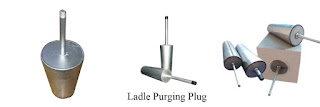The different uses of high alumina bricks
High alumina refractory bricks, also known as high alumina brick, and its production and stickers brick production process is similar to the difference is more with high-alumina clinker powder, refractoriness than clay brick, anti-acid and alkali resistance candle better performance It is used in various kiln firing zones.
Al2O3 content of more than 48% of the aluminum silicate refractory bricks are collectively referred to as high alumina refractory bricks. (Al2O3 is 60% ~ 75%); Ⅲ and so on (Al2O3 is 48% ~ 60%). The Al2O3 content is divided into three grades: I and so on (Al2O3> 75%); According to the mineral composition can be divided into: low mullite (including sillimanite) and mullite (Al2O3 for 48% ~ 71.8%), mullite - corundum and corundum - 71.8% ~ 95%), corundum (Al2O3 95% ~ 100%) and other refractory bricks.
With the increase in Al2O3 content in high alumina bricks, the number of mullite and corundum components also increased, the glass phase decreased, the fire resistance of high alumina refractory bricks and the density of refractory bricks also increased. When the Al2O3 content in the high alumina brick is less than 71.8%, the only high temperature stable crystalline phase in the high alumina refractory brick is mullite and increases with the Al2O3 content. The high - temperature stabilized crystal phase with high content of Al2O3 is more than 71.8%. With the increase of 71.8%, the amount of corundum is increased and the mullite is reduced, and the high temperature performance of high alumina refractory bricks is improved accordingly.
The firing temperature of the high alumina refractory bricks depends on the sintering properties of the alumina raw materials. With the special grade and I grade bauxite clinker (volume density ≥2.80g / cm3), the raw material structure is uniform, the content of impurities is high, so that the green body is easy to sinter, but the firing temperature range is narrow, Undercooled. The use of II bauxite clinker (bulk density ≥ 2.55g / cm3), due to the second mullite caused by the expansion and loosening effect, so that the green body is not easy to sintering, so the firing temperature is slightly higher. When the grade III bauxite clinker (volume density ≥2.45g / cm3) is used, the structure is dense, the content of Al2O3 is low and the firing temperature is low, which is generally slightly higher than 30 ~ 50 ℃ of the firing temperature of clinker clay brick. High aluminum refractory bricks are fired in oxidized flame.
As the high aluminum refractories load softening temperature is an important property. The experimental results show that it changes with the change of Al2O3 content in high alumina refractory bricks.
When the content of Al2O3 is lower than that of mullite, the equilibrium phase of high alumina refractory brick is mullite - glass phase. The content of mullite increased with the increase of Al2O3 content, and the softening temperature of the load increased accordingly.
High aluminum brick thermal shock resistance than clay brick, 850 ℃ water cycle 3 to 5 times. Mainly due to the thermal expansion of corundum than mullite high, and no crystal conversion. And Ⅰ, Ⅱ and other high-alumina brick thermal shock resistance than the other high-alumina refractory brick.
Article Source: Generality High Alumina Brick and Clay Brick
Company name: Luoyang Wanhao New Material Co., Ltd
Email:sales100@wanhaorefractory.com
Website:http://www.wanhaorefractory.com/
Company name: Luoyang Wanhao New Material Co., Ltd
Email:sales100@wanhaorefractory.com
Website:http://www.wanhaorefractory.com/

评论
发表评论